The Apollo 1 mission, intended to symbolize a major leap for humankind in the realm of space exploration, ended in a devastating catastrophe that shocked the world and fundamentally changed the landscape of space missions. This tragic incident, characterized by a deadly fire, has left an indelible mark on the annals of space exploration and steered the subsequent trajectory of safer, and more secure missions. Offering valuable insights into the background, challenges, and vision underlying the Apollo 1 mission, this discourse delves into the events leading to the disaster, the critical technical factors contributing to the fire, the in-depth investigation, and the far-reaching implications on future expeditions. The fire at Apollo 1 is not just a part of our historical past, but a reservoir of lessons which continue to influence space exploration to this very day.
Contents
Background and Context of Apollo 1 Mission
The Apollo 1 Mission: Goals and Legacy
The Apollo Program, initiated by the National Aeronautics and Space Administration (NASA) in the 1960s, marked an era of sophistication, exploration, and astounding advancement in human space flight. The inaugural Apollo 1 mission, although shrouded in tragedy, undoubtedly laid the groundwork towards achieving extraordinary milestones in space exploration.
Apollo 1, initially designated as Apollo Saturn-204 (AS-204), had the primary objective of laying the technological and procedural foundation for subsequent lunar missions. It was primarily a low-Earth orbital test of the Apollo Command and Service Module (CSM) to assess its readiness for future space expeditions. The mission aims hinged substantially on testing flight hardware under actual conditions, thereby scrutinizing every intricacy of the spacecraft systems during the flight.
The crew of Apollo 1 comprised Command Pilot Virgil I. “Gus” Grissom, Senior Pilot Edward H. White II, and Pilot Roger B. Chaffee. These astronauts were tasked with conducting a comprehensive evaluation of the CSM module systems during a 14-day stay in Earth orbit. Their mission protocol included a series of tasks, such as navigation and guidance exercises, docking procedures with the launch vehicle’s upper stage, and conducting thermal balance tests. The Apollo 1 mission also aimed to prepare astronauts for longer-term spaceflights, thus sharpening the skills required for succeeding Apollo missions.
Set to launch on February 21, 1967, the Apollo 1 mission met with a heart-wrenching catastrophe during a pre-flight test on January 27, 1967. A cabin fire, accelerated by the high-pressure pure-oxygen environment inside the module, engulfed the craft, resulting in the tragic loss of the entire crew. The disaster forced NASA to suspend manned flights until the completion of thorough investigations. The ensuing Apollo Review Board report, though dismaying, led to indispensable improvements in flight safety measures, equipment design, and operational protocols. Consequently, all future missions were equipped with newly designed, safer spacecrafts with revised operational procedures, a fruit borne out of the depths of misfortune.
Although the Apollo 1 mission never took flight, it is remembered for its significant influence in orchestrating meaningful changes in NASA’s Apollo Program. The lessons drawn from it nudged the Apollo Program towards the right path, fostering achievements that redefined the limits of human capabilities. Hence, the Apollo 1 mission, notwithstanding its tragic outcome, remains an integral part of the legacy of human space flight, illustrating the indispensable perils entailed in the pursuit of unprecedented scientific breakthroughs.
In conclusion, the Apollo 1 mission reaffirms the enduring strength of human resilience. It stands as a solemn reminder of the risks involved in traversing the final frontier and the obligation to incessantly enhance safety measures. This tribute to Apollo 1’s pioneering astronauts is not just an echo of their sacrifice, but a testament to the exceptional progress they helped humanity to achieve in the grand endeavor of space exploration.
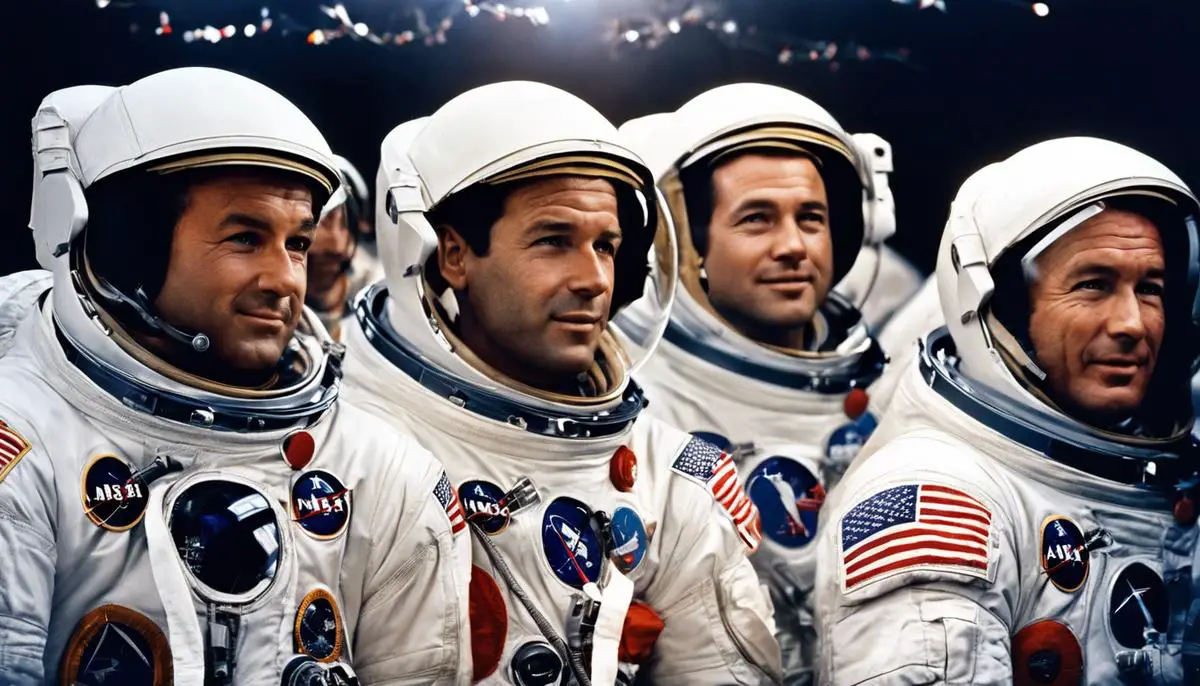
The Catastrophe: Outlining the Apollo 1 Fire Tragedy
Considering the existing dissemination on the catastrophic nature of the Apollo 1 fire, let’s focus this discussion on the riveting aftermath: how the world reacted and the consequent actions NASA chose to undertake.
The deathly blaze struck significantly more than our astronauts or their vessel; it plunged the entire global community into a profound state of disbelief and despair. Space exploration – the neoteric frontier believed to be intertwined with humankind’s destiny, suddenly seemed staggering with amplified perils. The searing imagery of the sober situation painted by media publications transitioned from a beacon of ambition to a stern reminder of the undertaking’s reality.
NASA, struck with a monumental setback, found itself at this crucial juncture reckoning with deep introspection. This calamity necessitated unforeseen urgency in comprehensive reassessment and overhauling of dictates, procedures, and equipment associated with manned space voyages. The magnitude of this catastrophe forced not just NASA, but the globe to reevaluate what it truly meant to venture into the uncharted territory of outer space.
In immediate response to the disaster, NASA convened the Apollo 204 Accident Review Board to meticulously analyze every detail of the catastrophe and assess the root causes. Following unabridged scrutiny, the committee presented a 217-page report, exhaustively covering insights, observations, and recommendations.
The report was unambiguous in identifying major deficiencies. These highlighted failures ranged from spacecraft’s design flaws, improper installation, and testing oversight, to even material selection. Such revelations paved the path for significant modifications and reforms in NASA’s subsequent spacecraft designs and operational protocols.
In particular, the Apollo command module underwent striking transformations. One of the most significant was replacing the cabin’s pure oxygen atmosphere with a mix of nitrogen and oxygen, a move aimed at substantially reducing fire risk. Material choices were reevaluated, with a new focus on flame-resistant substances. Safety equipment, including crew suits, parachutes, and helmets, were reengineered with enhanced safety features.
One of the property revisions concerned the hatch design. The inward-opening three-layer hatch, whose belated opening expedited the tragedy’s repercussions, was replaced by a single unified outward-opening hatch. This substantial modification was instrumental, allowing astronauts to evacuate within seconds during emergencies.
The astonishing fact remains that in the wake of tragedy, NASA managed to acquiesce to the indomitable spirit of exploration, resilience, and advancement. While the immediate actions taken were reactive, these steps were undoubtedly proactive in safeguarding future expeditions.
The world had witnessed not just the severe consequences and demands of being interstellar explorers but also the greatness capable within humanity. The legacy of Apollo 1 – the fortitude of Grissom, White, and Chaffee – imparted a profound lesson. It taught us that no amount of pioneering technology or depth of scientific knowledge could displace the quintessential human traits of bravery, solidarity, and immense perseverance.
Their indomitable spirit continues to inspire future generations towards a deeper understanding of the cosmos. This fire, instead of extinguishing our celestial aspirations, ended up stoking it, proving that even in adversity, we continue to forge ahead, unshaken and unswerving. The tale of Apollo 1, etched indelibly in the annals of space exploration, and humankind, remains a humbling testament to our collective resilience.
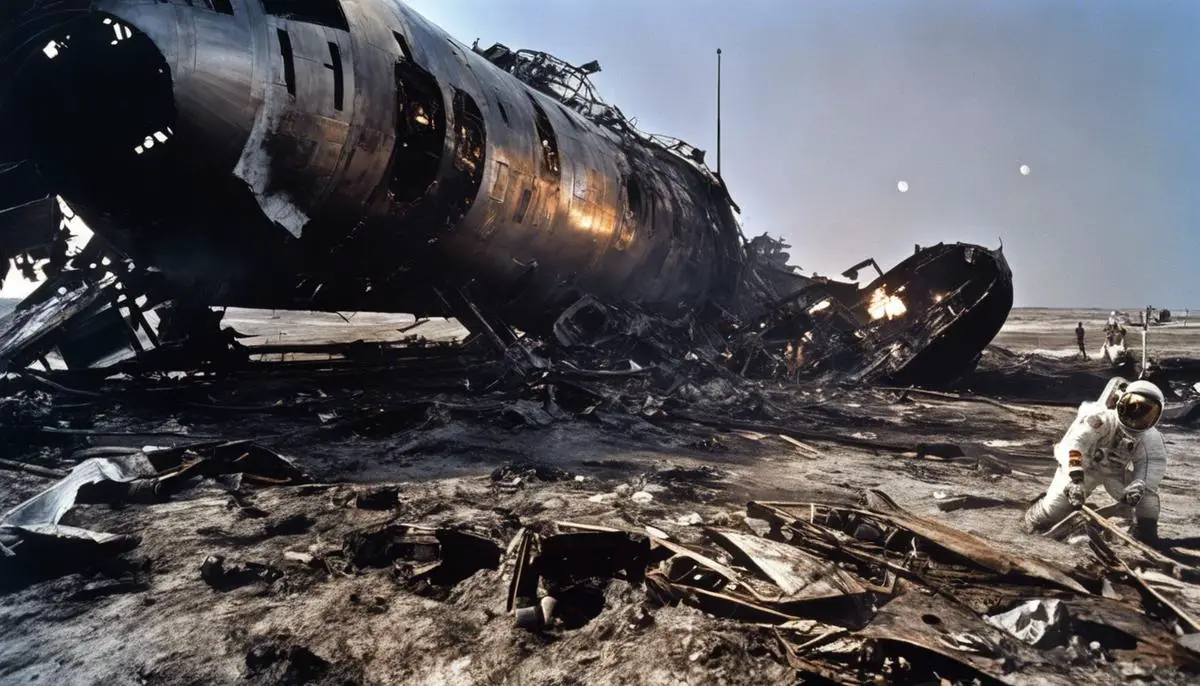
Technical Factors leading to the Fire
Concrete factors contributing to the ignition and propagation of the fire in the Apollo 1 cabin have been thoroughly analyzed by numerous investigators and experts, revealing a combination of technical oversights and regrettable decisions.
Pure oxygen atmosphere within the spacecraft — a contentious yet intentionally chosen aspect of NASA’s Apollo design — significantly averted oversight. While this atmosphere rendered a lighter spacecraft and simplified systems, the risk of combustion was profoundly increased, as pure oxygen supports fire more than a nitrogen-oxygen blend. Even seemingly innocuous materials, such as Velcro, used in abundance within the cabin for its utility in microgravity, could rapidly ignite in the concentrated oxygen environment.
Another critical design choice was NASA’s decision to utilize an inward-opening hatch on the Apollo 1 module that could not be swiftly opened under pressure. This was a detrimental drawback exposed during the fateful fire, wherein the cabin’s internal pressure due to the fire prohibited the crew from opening the hatch to escape.
On the fateful day of January 27, 1967, the combination of an abundance of flammable materials, a pure oxygen atmosphere, an inability to rapidly evacuate, and a spark – which could have derived from any of an array of electrical equipment – created an environment ripe for disaster.
The subsequent investigation by the Apollo 204 Accident Review Board, although a cause for considerable debate, offered a thorough analysis of the catastrophe. It cited the main causes as, “a failure in spacecraft system design,” an “inadequate consideration of personnel safety,” and “deviations from accepted ground test procedures.”
Recommendations for remediation encompassed not just mere changes to spacecraft design but pointed towards a considerable overhaul of testing protocols and safety procedures, a monumental shift in organizational culture and priority.
While the command module design was drastically modified, including the incorporation of a rapid-opening, outward hinging hatch and minimizing flammable materials, considerable enhancements were also proposed to operational processes, including reassessment of test protocols and contingencies relating to crew safety. Emergency preparedness and escape procedures, and personnel training were enhanced, shifting the focus on safety to a largely proactive approach.
The tragedy of the Apollo 1 fire was indeed a significant turning point in space exploration. It resulted in pivotal reforms in spacecraft technology and mission protocols, symbolically representing responsibility, safety over haste, and respect for human life. Ensuing missions and NASA’s overall modus operandi bore this resilient embodiment of the lessons learned.
Apollo 1’s legacy thus extends beyond its intended expedition. It serves as a testament to the commitment to learn and adapt, even in the face of great adversity. Its lessons, engraved within the annals of space exploration, will continue to guide and safeguard future endeavors into the unknown fringes of space.
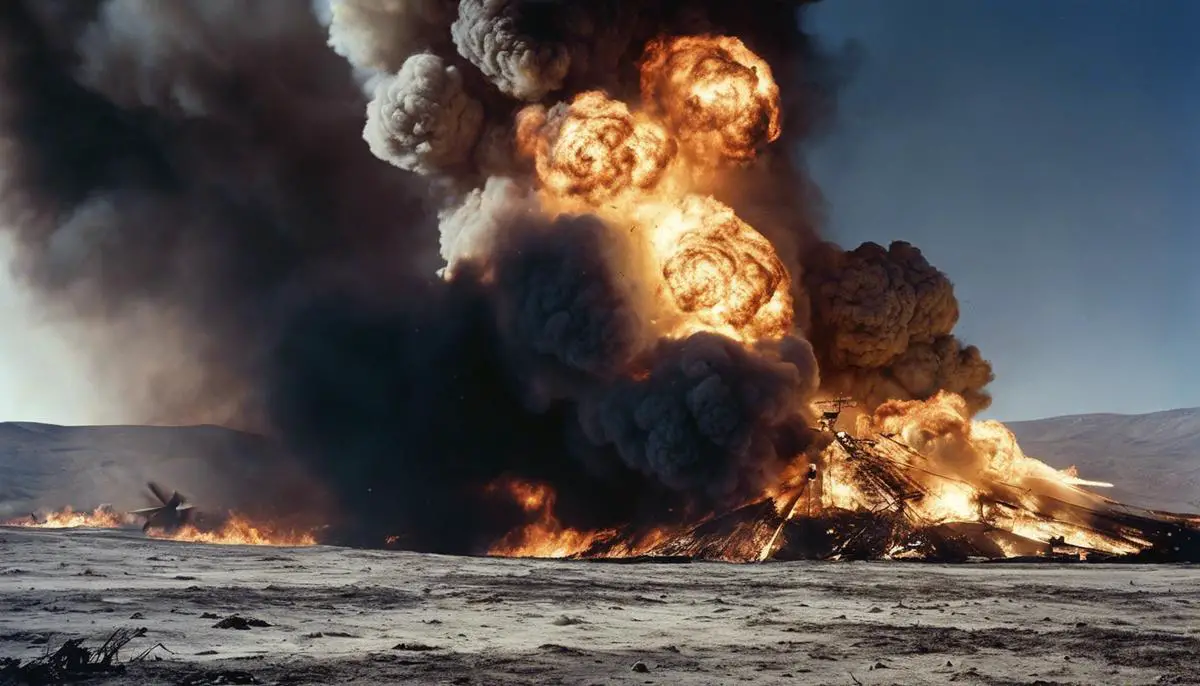
Apollo 1 Fire Investigation and Findings
Beyond the confines of the vividly tragic events that unfolded on January 27, 1967, the investigation of the Apollo 1 fire demanded a level of scientific rigor and insight that forever changed the nature of space exploration. Enforced by the humbling reminder of the immense risks inherent in the endeavor to conquer the cosmos, the investigation necessitated an acute attention to detail and exhaustive probing into the underpinnings of the unfortunate incident.
The process began in earnest, led by a team called the Apollo 204 Accident Review Board — formed of esteemed professionals, each an eminent expert in their field. Their primary function was to delve into every conceivable aspect of the accident and bring to light noteworthy discoveries that can shape future safety protocols.
Their modus operandi combined simulation models, physical examination of the wreckage, and a comprehensive analysis of test results. The root cause analysis, in particular, proved invaluable in identifying the ignition source of the fire – a stray spark from damaged wiring in the lower equipment bay.
The investigation also peeled back the layers on the chain of events, tracing the fire’s spread to a lethal cocktail of circumstances: the spacecraft’s pure oxygen atmosphere, which heightened the combustibility, and the spaceship’s prevailing hard vacuum conditions. The fire was consequently intensified, paving the way for swift, uncontrolled propagation.
Moreover, the Review Board highlighted the detrimental role of the inward-opening hatch, which had a three-part release mechanism that proved virtually impossible to use in an emergency, pinning the astronauts inside the burning cabin despite their valiant fight for survival.
The abounding flammable materials inside the spacecraft served as an inexhaustible fuel source for the fire. The investigators concluded that this, compounded with problematic cabin design, directly impeded escape efforts, leading to the tragic and instantaneous loss of the crew.
The investigation ultimately prompted a quantum leap in how spacecraft safety was understood, delineating a new framework of norms that prioritized crew protection above all else. Its findings led to major design alterations of the Apollo command module, including the reconfiguration of the hatch to an outward-opening design, replacement of combustible items with self-extinguishing materials, and the inclusion of auxiliary pressurized oxygen supply for emergency situations.
In being the catalyst for these pivotal transformations, the findings of the Apollo 1 investigation embody a legacy of global consequence. In their wake, they redefined safety protocols, overhauled testing procedures and augmented emergency preparedness — reforms that have shaped the trajectory of human spaceflight and undoubtedly prevented further catastrophe.
Although borne from a calamity that shook the world, the lessons learned from the Apollo 1 fire serve as a testament to the resilient spirit of space exploration and the relentless pursuit of knowledge. In the face of persistent challenges, let us take solace in remembering that every story, each lesson etched into the annals of our exploration history, fuels the next triumphant step in this never-ending journey towards the stars.
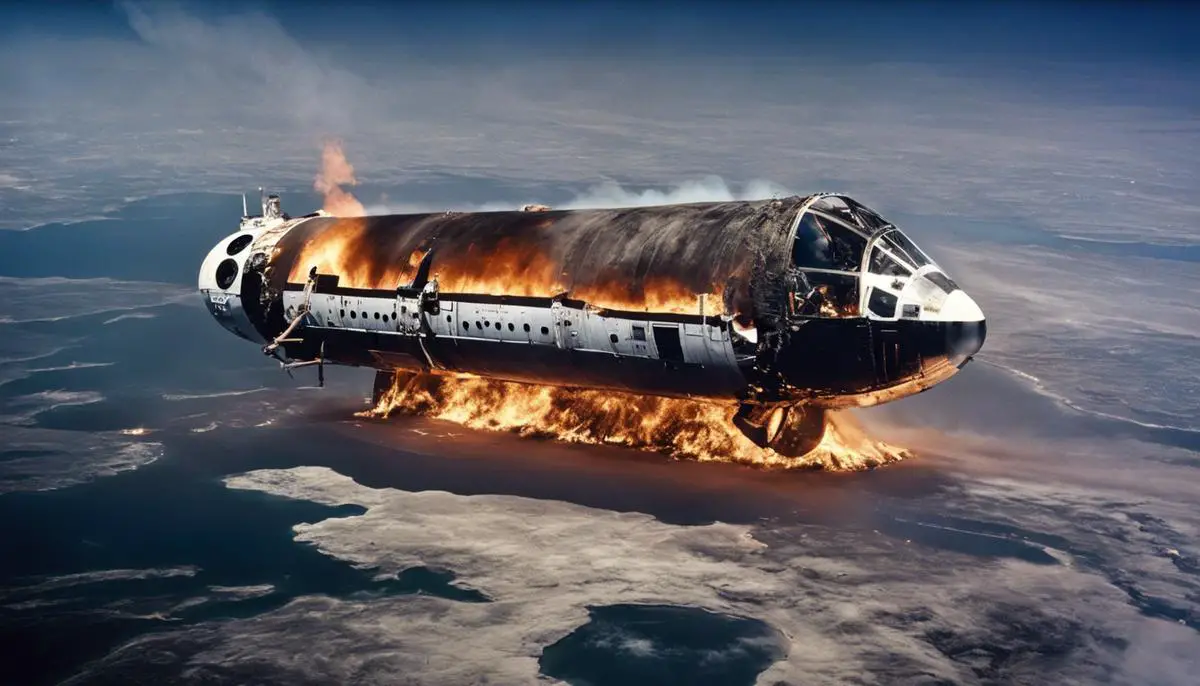
Impact on Future Space Missions
Amid the global shock following the Apollo 1 fire, a collective imperative was felt; the need to comprehend the factors and oversights that culminated in such a tragedy. The Apollo 204 Accident Review Board played a crucial role in shouldering this mandate. With meticulous examination, nerve-wracking scrutiny, and the aid of simulation models, the board eventually pointed towards damaged wiring in the lower equipment bay as the ignition source of the fatal fire.
From the onset, the tragedy was a result of a chain of unfortunate events, each getting a meticulous examination during the investigation. Especially prominent were the flaws in the spacecraft design, culpable in the rapid spread and intensification of the fire – that under normal circumstances might have been deemed preventable.
One significant factor in the rapid escalation of the fire was the cabin design that engendered a high-pressure cabin environment, making it challenging for the crew to open the inward-opening hatch. The investigation findings were unequivocal in faulting the cabin design as an undeniable contributory factor to the crew’s inability to escape.
Disturbingly, multiple flammable materials within the cabin were also identified. Coupling a pure oxygen atmosphere with these materials during the prelaunch test craftily created a setting akin to a powder keg, waiting for the smallest spark to ignite.
Given the stark implications of the review board’s findings, NASA had no option but to chart a new course. Major design alterations became an immediate inevitability; the need for safer materials, an improved cabin design, and an outward-opening hatch were among the necessary changes introduced. These modifications were purpose-driven, aiming to correct the poor decisions of the past and to provide enhanced safety for future missions.
The impact of the Apollo 1 fire didn’t stop at design modifications. The entire approach towards pre-flight tests was overhauled to include stringent safety procedures. Emergency preparedness was enhanced, and escape procedures were revised – a direct response to the lessons learned from the regrettable incident.
Indeed, any examination of the history of space exploration would be incomplete without an acknowledgment of Apollo 1’s influence. The tale of Apollo 1, woven indelibly into the fabric of space exploration, showcases an endearing tale of the human spirit’s resilience and our unremitting quest to behold the stars. This story serves as a constant reminder of the risks that lie before us in the pursuit of progress and of the sacrifices that are sometimes made to propel humanity forward.
In absorbing the lessons of the Apollo 1 fire, the scientific community took the tragic searing of three brave souls to heart – transforming the catastrophe into a catalyst for rapidly improving not only the physical design of spacecraft but also the systems and processes that underpin human spaceflight.
The fire thus acted as a striking inflection point in the trajectory of space exploration. In its wake, it left a legacy of enhanced safety, improved procedures, and a fundamental redirection of design philosophy – all of which have doubtlessly played a role in ensuring the success of subsequent missions. It marked the birth of an era where mission and crew safety began to take precedence over mere accomplishment and speed.
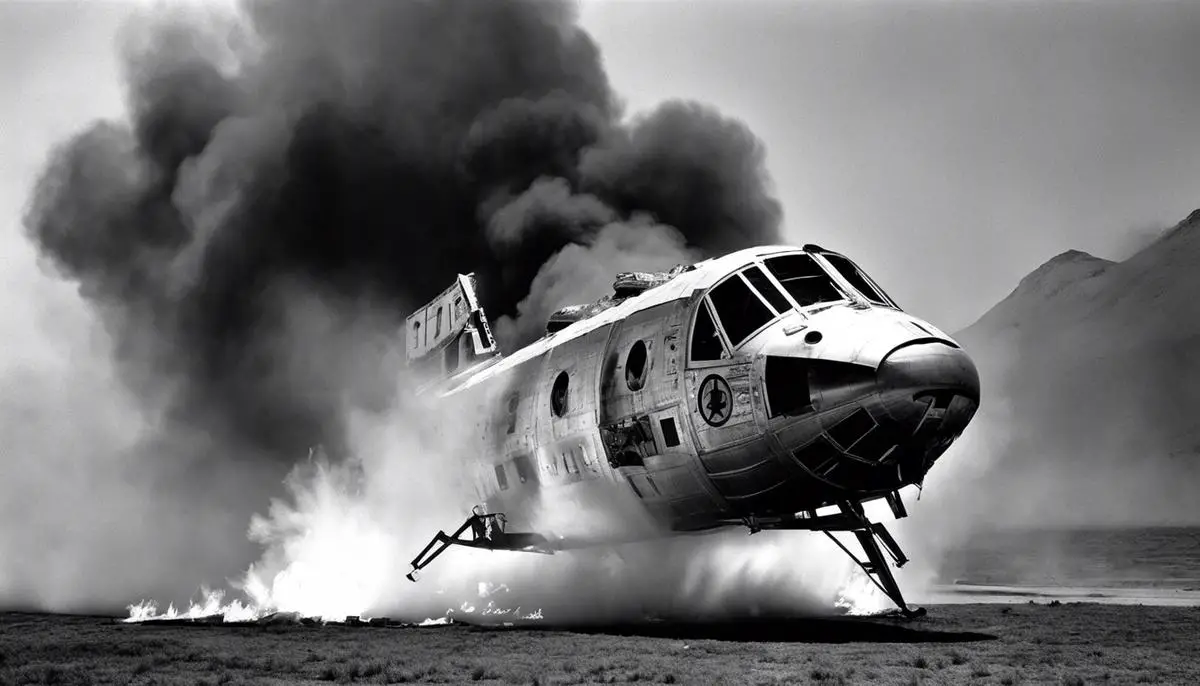
Intertwined within the legacy of the Apollo 1 is an intricate web of triumph, tragedy, and tumultuous learnings. The fire – a catastrophic disaster that claimed the lives of three brave astronauts, brought to the forefront the inherent risks tethered to space exploration, thus triggering profound evolutionary changes in mission planning, execution, and safety standards. By unraveling the complexities associated with such endeavors, we acknowledge the enormous challenges while underscoring the indomitable spirit of humanity in its quest to explore the cosmos. The repercussions of Apollo 1 fire tragedy still echo in the hallways of NASA, constantly reminding us of the unshakeable commitment to safety, the lessons learned, and the valiant souls lost in the pursuit of mankind’s cosmic dreams.
